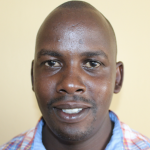Ebutenje Primary School does not have a reliable clean water source on school grounds for its 833 students. They have a small plastic water tank that collects rainwater, but it only lasts a day before it needs to be refilled. In fact, there was no water in the plastic tank on the day of our visit, even though it had rained the day before!
This forces students to leave school to go to a community well. This well is about one kilometer away, causing the journey to cut into valuable class time. Not only that, but the large crowds at the well also cause the students to return late to class. The walk back is even more tiresome because students are carrying heavy water containers the entire way.
Students are exhausted and struggle to concentrate during class. They don't have enough water to drink throughout the day.
What we can do:
Not having enough water also cripples the school's ability to keep classrooms, latrines, and other facilities clean. These things are cleaned once a week at the most.
"The sanitation and hygiene in our school is so bad simply because the available pit latrines are few in number in relation to the population. These facilities get dirty easily, more so cleanliness is not done on regular because we don't have enough water," said Senior Teacher Otundo.
Training
Training on good hygiene habits will be held for two days. The facilitator will use PHAST (participatory hygiene and sanitation transformation), ABCD (asset-based community development), CTC (child to child), lectures, group discussions, and handouts to teach health topics and ways to promote good practices within the school. The CTC method will prepare students to lead other students into healthy habits, as well as kickstart a CTC club for the school.
Handwashing Stations
We will deliver two handwashing stations to the school, and the club will fill them with water on a daily basis and make sure there is always a cleaning agent such as soap or ash.
VIP Latrines
400 boys only have five pit latrine doors, meaning there are 80 boys per latrine. This is a large shortage!
Two triple-door latrines will be constructed with local materials that the school will help gather. Three doors will serve the girls while the other three serve the boys. And with a new source of water on school grounds, students and staff should have enough to keep these new latrines clean.
Rainwater Catchment Tank
A 50,000-liter rainwater catchment tank will help alleviate the water crisis at this school. The school will also help gather the needed materials such as sand, rocks, and water for mixing cement. Once finished, this tank can begin catching rainfall that will be used by the school’s students and staff.
We and the school strongly believe that with this assistance, standards will significantly improve. These higher standards will translate to better academic performance!

 Rainwater Catchment
Rainwater Catchment
 Rehabilitation Project
Rehabilitation Project


































